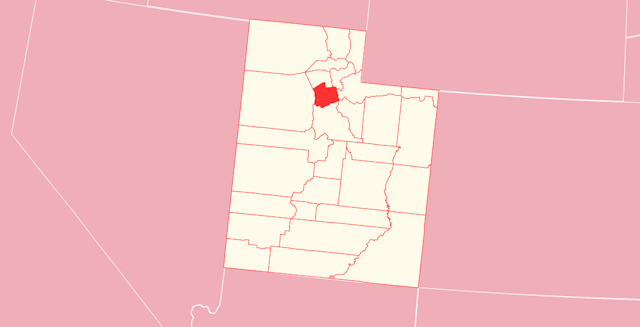Rehabs in Salt Lake
Salt Lake County is situated in the US state of Utah. The administrative center and the largest city is Salt Lake City. According to the 2020 US Census, the population was 1,185,238. Thus, these numbers make it the most populous region in Utah.
Utah has high rates of substance misuse and faces all the dreadful effects of the drug crisis. Almost 11% of the state’s population (approximately 345,000 residents) use illicit drugs. Moreover, nearly 3,76% of its population (119,000 people) abuse alcohol.
Salt Lake County has the highest rates of drug overdose deaths in the UT. Between 2017 and 2019, there were 782 drug overdose deaths here. Besides, almost 14% of local adults report binge drinking. This number also influences the number of alcohol-involved driving deaths. That is to say, between 2015 and 2019, there were 82 driving cases.
These statistics show serious outcomes that can result from substance abuse. It also underlines the importance of sharing substance abuse resources with individuals in need. To overcome the above-mentioned issues, the state has established many drug and alcohol rehabs in Salt Lake County, UT.
Read on to find the information that you need and achieve lasting recovery.
Available Treatment Options
Substance dependency, especially when paired with other health disorders, requires all-inclusive therapy. Rehabs in Salt Lake County, Utah offer special treatment that reaches the root cause of the dependency to make addicts obtain sobriety and live free and meaningful lives.
In addition, they offer outcome-based care programs at all levels:
- Substance abuse evaluation
- Detox
- Inpatient program
- Outpatient program
- Aftercare support
Substance Abuse Evaluation
Assessment is the best way to reach a successful recovery. In brief, through the screening and assessment, the patient obtains an optimal care plan. Moreover, it will help to find local rehab that best suits your needs.
Detox
Generally, this is the first step in the process of recovery. To alleviate the impact of painful and even life-threatening withdrawal symptoms, it is also vital to go through detox in a safe and secure environment. Moreover, detox gives a sense of confidence at the beginning of the recovery procedure.
Inpatient
Addicts with severe and long-lasting types of addiction may get care at an inpatient or residential healing center. The latter requires the patient’s stay at the facility until the end of the treatment. It offers around-the-clock supervision and a safe environment.
Partial Hospitalization Program (PHP)
PHP is the highest level of outpatient care. It is more flexible than others. That is to say, the patients may receive medical care and professional support at the center while sleeping in their own houses. PHP involves individual and group therapy and other sessions. Patients usually visit the hub five times a week. Each session lasts about 6 hours.
Intensive Outpatient Rehab (IOP)
IOP is a step down from PHP. It has the same structure However, patients visit the hub three times a week.
Aftercare
For those who have experienced relapses in the past, it is vital to attend meetings with peers who are also in the healing process. That ensures sobriety and decreases the risk of decline.
Payment
When considering drug and alcohol rehab in Salt Lake County, Utah, people pay special attention to the prices. Several factors influence the costs:
- Type and duration of the recovery program
- Facility’s amenities
- Used medications, etc.
However, some insurance plans cover addiction treatment to some extent. Moreover, residents may also apply for Medicaid and Medicare. There are also state-funded centers that provide treatment at low or no cost. Thirdly, flexible financing, loans, and scholarships are also accessible.

